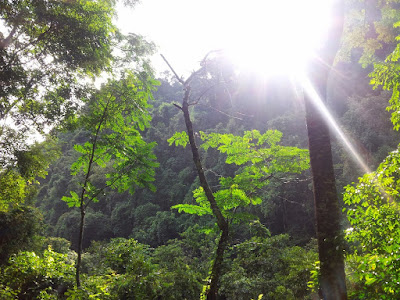Payments for ecosystem services in Hoa Binh province, Vietnam An institutional analysis
Payments
for ecosystem services (PES), also known as payments for environmental services
(or benefits), are incentives offered to farmers or landowners in exchange for
managing their land to provide some sort of ecological service. They have been
defined as "a transparent system for the additional provision of
environmental services through conditional payments to voluntary
providers." These programmes promote the conservation of natural resources
in the marketplace.
Ecosystem
services have no standardized definition but might broadly be called "the
benefits of nature to households, communities, and economies" or, more
simply, "the good things nature does." Twenty-four specific ecosystem
services were identified and assessed by the Millennium Ecosystem Assessment, a
2005 UN-sponsored report designed to assess the state of the world's
ecosystems. The report defined the broad categories of ecosystem services as
food production (in the form of crops, livestock, capture fisheries,
aquaculture, and wild foods), fiber (in the form of timber, cotton, hemp, and
silk), genetic resources (biochemicals, natural medicines, and
pharmaceuticals), fresh water, air quality regulation, climate regulation,
water regulation, erosion regulation, water purification and waste treatment,
disease regulation, pest regulation, pollination, natural hazard regulation,
and cultural services (including spiritual, religious, and aesthetic values,
recreation and ecotourism).
Notably,
however, there is a "big three" among these 24 services which are
currently receiving the most money and interest worldwide. These are climate
change mitigation, watershed services and biodiversity conservation, and demand
for these services in particular is predicted to continue to grow as time goes
on. One seminal 1997 Nature magazine article estimated the annual value of
global ecological benefits at $33 trillion, a number nearly twice the gross
global product at the time. In 2014, the author of this 1997 research (Robert
Costanza) and a qualified group of co-authors re-took this assessment - using
only a slightly modified methodology but with more detailed 2011 data - and
increased the aggregate global ecosystem services provisioning estimate to
between $125–145 trillion a year. The same research project also estimated
between $4.3 to 20.2 trillion a year of losses to ecosystem services, due to
land use change.
This
study examines the institutional design and actual performance, of payments for
ecosystem services (PES) in Vietnam.
Taking
Payments for Forest Environmental Services Program (PFES Program)
implementation in Da Bac district, Hoa Binh province as a case study, it brings
to light how PES program design and implementation contributed to the central
government's objectives to:
(1)
involve stakeholders in forest management;
(2)
reduce the government's budget burden for forest protection;
and
(3) maintain political control over forest resources.
In
Vietnam, the PFES Program is implemented in a top-down manner. Participating
households act as government-induced forest guards rather than forest owners.
Incomplete design at the central-level results in poorer performance at lower
levels and, the lack of strategic management makes it difficult to know whether
the program has actually improved ecosystem services and forest management.
While
the PFES Program complements other institutions at the national- and
local-levels, some institutional incompatibilities exist in terms of customary
practices. It is unlikely, however, that these will develop into an
institutional conflict.
Issue
Date: 2016
Publisher:
Elsevier B.V.
Citation:
Scopus
Description:
Ecosystem Services Volume 22, 1
December 2016, Pages 83-93
ISSN: 22120416
Appears
in Collections: Bài báo của ĐHQGHN trong
Scopus





Nhận xét
Đăng nhận xét